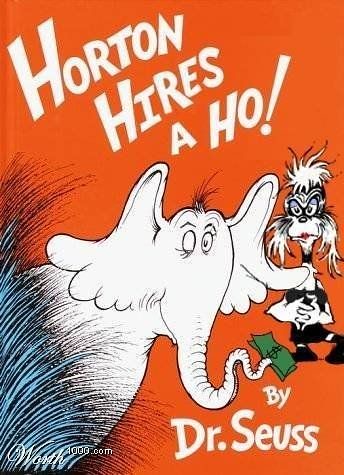I figured since a lot of the criticisms I was raising with this methodology didn't seem to be understood, I'd stop arguing in circles and instead show some calculations that follow from this PDSS approach.
I downloaded Boris's PDF file and then put into a spreadsheet, which is now uploaded on Google Docs (see here: https://spreadsheets.google.com/ccc?key ... 0qcB#gid=0)
I took the liberty of adding a new column to his table, what I call "TeamDRat - Drat", column "O". So if your DRat is higher than that of the team's, then you'll get a positive number in green font, and if smaller, a negative number in red font.
As you can see, almost everyone on the team somehow has a better DRat than the team average, except for POB, Rasho, and Jose. Jose's Oliver DRat is in fact 118.30, the worst on the team. As you can see, this by itself seems a bit kooky....almost everybody on the team improves the team defense, yet the defense is somehow terrible? I'll offer no more commentary on this for now, and just let you guys chew on how counterintuitive this result is.
I've broken this post up into four parts:
1) Do PDSS Drtg's match up with what actually happened?
2) Do PDSS Drtg's predict good-performing or bad-performing lineups?
3) Some high-level analysis
4) Concluding Remarks
1) Do PDSS Drtg's match up with what actually happened?
Alright, let's move on. So Row 20 of the sheet has the basketballvalue.com and basketball-reference.com computations for what the team Defensive Rating was this year. The basketballvalue.com simply counts up how many points were scored by opponents of the Raps this year, and then divides by the number of possessions opponents used to score. Obviously, if an opponent scores lots of points on you without using very many possessions, this is very bad...it means that everyone has a highly efficient offense versus you. In other words, your defense is terrible. And as you know, this season we had one of the worst defenses of all time.
Now, usually when you have individual defensive ratings, you'd like to see how they interact to then (A) compute the performance of the entire team and (B) also estimate specific lineups. So let's try to see if we can do task (A) using PDSS.
Alright, so I tried to do this in Rows 27 through 31. Method 1 multiplies each of the individual DRats from PDSS by the number of minutes played, computes the sum, and then divides by the sum of the minutes played by the listed players. In other words, a minutes-weighted average.
Doing this, I get a number (111.7855) that is completely different from the true team DRating from Row 21. In fact, we are off by nearly 1.4 points. In other words, our time-weighted estimate of what the team's defense predicts a better defensive team than expected. Of course, this is obvious if you think about it...Boris's PDSS values indicate that almost everyone on the team is an above-average defender, relative to the team average. So of course once you start taking (time-weighted) averages, you'll get results inconsistent with reality.
Alright, but as Boris said earlier in the previous thread (viewtopic.php?f=32&t=1047850), doing a time-weighted average is NOT the recommended approach to go from individual DRats to team DRats. So let's do a possession-weighted average instead. To compute possessions used for each player (well, something proportional to it), I multiply Dpss% (fraction of defensive possessions used while on the floor) by the minutes played. The result of this possession-weighted average is in Row 28, and is nearly identical with the time-weighting procedure did earlier...we get a team DRat of 111.7203.
So the point of this little calculation is to show you that both time-weighted and possession-weighted estimates should result in very similar team estimates. So if you eyeball a bunch of DRats and all the big-minute guys have GOOD DRats yet the team as a whole has BAD DRats, something is fishy.
Anyway, so we've shown that there is a big gap between the actual team defensive rating and that predicted by this individual PDSS DRat. What happens when we start analyzing individual lineups, say the top 10 lineups most used by the Raps?
2) Do PDSS Drtg's predict good-performing or bad-performing lineups?
Go to column 43, where the Lineup analysis begins. I'll quote from the document:
Next, let's see whether this approach estimates the defensive performance of the
most heavily played Raps lineups. Let's compare with basketballvalue.com (http://basketballvalue.com/teamunits.ph ... 0&team=TOR). The column “Drtg” in blue lists the Drtgs of the corresponding lineups over the season. If the Drtg is Red, then it means that the corresponding lineup defends worse than the team as a whole. If green, then better. Notice that the most used lineup (at ~370 minutes) has defenders who have PDSS Drats better than the team average, yet the end result is a lineup that performs worse than average. Notice that for certain lineups, this strategy of possession-weighting or time-weighting player defensive values cannot mathematically yield anything even close to the correct Drtg for that lineup. For example, lineup #3 (Cackoglu) has a horrifying Drtg of 125.78. Yet, using the possession-weighting scheme that Boris suggested for entire teams, there is absolutely no way to come up with the number 125.78, no matter what normalized-weighting scheme you use.
So, as I've said, even just by eyeballing the ratings for the top 10 most used lineups (H57 to H66), and comparing them to a table of player individual DRats (the light cyan-colored matrix @ I57), we see that there is absolutely no way to go from the individual DRats to the team Drat.
Of course, how big is the discrepancy? We should probably go ahead and calculate the possession-weighted PDSS estimate of the performance of each lineup. To do this, I utilized a table titled "Matrix of PDSS Poss Used", which is right below the cyan-colored matrix @ I57. The results are in the column starting @ N57.
Look closely at the column starting @ N57. Again, all of the numbers are tightly clustered around 110-112. So this technique cannot tell us about certain lineups that were actually used this season and were EXCELLENT defensively, nor can it predict that Cackoglu is a terrible defensive lineup. Of course, if you think about it mathematically, it is clear why this is true...this approach cannot do anything beyond saying a lineup's performance is a weighted average of the players in it. So thus, since the best player's DRat is 107.1 (Pops Mensa Bonsu), and the worse is at 118.3 (Jose Calderon), it has no way of understanding that the Raps had many lineups which performed outside of this range.
Finally, what is the error for the PDSS estimates for each lineup? This is calculated in the cyan-colored column that begins at O56. As I said earlier, it has no clue how to understand either the best Raptors lineups or the worst ones defensively (and again, this makes sense, if you go back to page 25 of the previous thread ((viewtopic.php?f=32&t=1047850)) and read the intuitive explanation I gave.)
3) Some Analysis
As I said on Page 25 of the previous thread (viewtopic.php?f=32&t=1047850), this methodology says a player's DRat = TeamDRat + PlayerOffset (PlayerOffset is computed as a function of Stop% and the rest of the equation Boris posted.) So from there, you are supposed to understand the behavior of lineups and then teams by some sort of averaging procedure (either time-weighted or possession-weighted). It should be clear that if you have any sort of weighted average of a list of say three numbers (N_1, N_2, N_3), it is impossible to get any numbers larger than the biggest number in your list, or smaller than the smallest. So this procedure that Boris outlined has no chance of understanding most of the lineups that teams use during the season.
Of course, someone might just say, "well, it is making mistakes on lineups, but does a good job of predicting the final Team DRtg!" They might say that the error of 1.4 or whatever that I got above is not really that meaningful. But the problem is, we have no way of knowing if the quantity PlayerOffset is correct or not. I could propose an alternate procedure (call it RippRatings) that is almost the exact same as Oliver's Drtg, but instead sets Playeroffset to a uniformly random variable between say -.1 and +.1. RippRatings are of course stupid and offer no insight into player performance, will fail to describe individual lineups (just as Oliver's ratings do), but will do even BETTER when it comes time to compute the Team Drtg (since I'm just averaging several random variables between -.1 and +.1).
So this is the flaw of the method...it doesn't understand lineups, and the fact that it produces numbers close to the average team rating is meaningless, since this useless RippRatings procedure I did does the same exact thing, while offering no insight into who is good and who isn't.
4) Concluding Remarks
Feel free to download this sheet and play around with it yourself. And if you find any errors I made, again bring them to my attention.
Finally, just a comment...I know it might seem that I think this work is terrible, but this isn't true. I think there are some interesting ideas here. Like I said on page 25 of the other thread, the variable TeamDRat - OliverDrat is very interesting to me, and has the same feel of ON/OFF or APM style quantities. I also think Stop% is great, though I don't necessarily agree with this specific formula used here. But the idea itself is great, since you might actually be able to build some models involving variants of Stop% that do a good job of measuring a player's defensive impact, and then go from there to understanding lineup performance, and finally team performance.
So in short, the ideas here are useful, even though the exact formulation and "holy grail" approach that Boris takes less useful. In particular, you should be suspicious of his Lake Woebegonism, which seems to argue that almost everyone on the Raps is above average defensively, and that Bargs is one of the best defenders on the team. Next thing we will hear from him is that the Raptors also have always been at war with Eurasia...


















